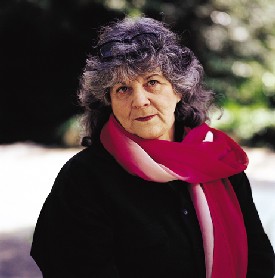Researchers from the Weizmann Institute of Science and Germany's Max-Planck Society have discovered exactly how each of five antibiotic drugs bind to the bacterial ribosome - the cell's protein factory - shutting off protein production. Proteins are the cell's primary component and the basis of all enzymatic reactions; blocking their production kills the bacterium.
The research team headed by Prof. Ada Yonath of the Weizmann Institute's Structural Biology Department and the Max-Planck Research Units for Ribosomal Structure in Hamburg and Berlin has uncovered the exact mode of action of these drugs. Yonath had earlier revealed the detailed structure of the two subunits forming the ribosome, the first ever accomplishment of its kind, in a study described by the prestigious journal Science as one of the most important scientific discoveries of the year 2000. Elucidating the structure of the ribosome - a notoriously unstable, giant nucleoprotein complex - was a goal that had eluded scientists for years.
Armed with their extensive understanding of ribosomal structure, Yonath, Dr. Anat Bashan, and Ph.D. student Raz Zarivach decided to examine precisely how different antibiotics bind to the ribosome and shut off its protein production. To do so they treated bacteria with one of five different antibiotics and then created crystals that captured the individual complexes formed between each drug and the bacterial ribosome.
To examine these microscopic structures the scientists bombarded the crystals with high-intensity X-ray beams, analyzed how the rays diffracted, and then worked backward to decipher the crystal's exact structure - a technology known as X-ray crystallography. Using this method the researchers were able, for the first time, to view how the antibiotic drugs bind to a specific site of action on the ribosome, shutting off its machinery. These findings were recently reported in Nature.
A better understanding of the mode of action of antibiotic drugs may improve the treatment strategies of existing drugs and lead to the design of antibiotics that target bacterial agents at the ribosomal level.
The Max-Planck scientists collaborating in this study are Francois Franceschi, Joerg Harms, Ante Tocilj, Renate Albrecht, and Frank Schluenzen.
Prof. Yonath holds the Martin S. Kimmel Professorial Chair. Her research is supported by the Helen and Milton A. Kimmelman Center for Biomeolecular Structure and Assembly and the Joseph and Ceil Mazer Center for Structural Biology.
